Cinema Final Cut
Here is the final cut of my Final Project.
View PostDTC 208 Introduction to Digital Cinema
Washington State University Vancouver
Here is the final cut of my Final Project.
View Postthis is the rough cut of my final project, Audio was corrupted, need to shoot the closing shot.
View PostHere is my cut of the group project.
View PostWhen doing the interview I found that some of the issues that I was running into was planning B roll and also scheduling. When assigned my interviewee was sick and by the time she was available I was also getting sick, so we had to find a time to do a shoot when both of us were able to feel well enough to do the interview.
View PostWhen I initially watched this video I was unsure about what the video was or what is was going to be about. I was caught off guard by shift and tone when the screen was dropped and the flashing started. I found that the imagery and the use of audio effects give a tone and instigate a feeling into the viewer. I was interested in how the use of mirroring effect was able to fill and still make an image feel surreal tied with the use of chopped up audio. I think that it has helped me think more about how effects can give tone to montage and how I could use it in my future work.
I believe that these effects were used effectively in the ability to enhance traditional cinema to take it farther then it could have gone into with more traditional tools.
View PostIn the opening of the show, we have our leads acting as a sort of anchor that is followed from shot to shot. A good show of the passage of time is the use of long continual shots with a lot of physical “noise” in the background, mixed with quick jump cuts to other rooms and ultimately different perspectives. We see the lead actress walk down a hall way and through cuts she makes her way to the kitchen without needing to show the entire trek, letting the audience feel as thought everything we watch is paced in a way that does not leave us jarred around but comfortably moving from place to place. Each shot is filled with actions and movement to give a sense of urgency and passing of time.
View PostThe start of this scene sets up to the audience the line that the two characters will be on. They do this by showing in a POV shot that starts in the back of the Plymouth Valiant, that then follows up past the Valiant to the Peterbilt and then to the front of the Peterbilt truck. Showing us the audience the 180 degree line that this pseudo chase is going to be taking on. The shots that follow the Valiant as it passes makes sure to show through eye matching when we are no longer seeing the shot in a two dimensional space. It shows us the start, middle, and end of the pass by cutting between the main character driving the Valiant and where he is looking when it cuts away from him. Whenever the Peterbilt passes it is brought on the audience through surprise because how it it also a surprise to the character who was focused more on his dashboard and the road instead of the Peterbilt behind him. Once the Peterbilt passes we as the audience are given a mirrored shot from the opening to help establish the are and positioning that we are in. These sequence of shots are very useful and help make this sense easy to follow as the audience.
View Post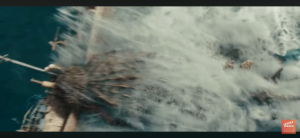
LS (establishing size)
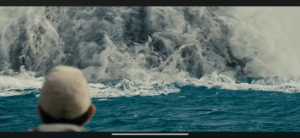
Medium close up, wide angle
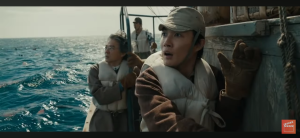
Medium (waist up)
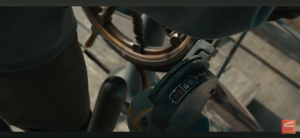
Close Up
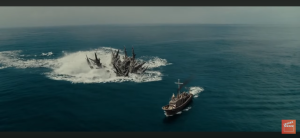
Extreme Long Shot Wide angle
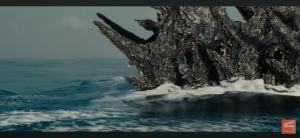
Wide angle
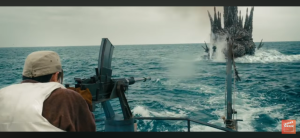
Close Up Wide angle
The scene is held together by the use of many wide shots intermittent with close ups to show the audience the massive size difference between Godzilla and the people that are on the boat. Whenever the shots are on Godzilla throughout this scene the camera is often shaky to also give this illusion of power and urgency. When it is focusing on the people it is a steady camera that focuses on never really showing the subjects in full to make them appear smaller, until we are given the last shot of the main character, were he is sharing more screen with Godzilla. This is used to show that the main character has built up the courage to face off with something that is significantly larger then him giving a semblance of equality.
View Post